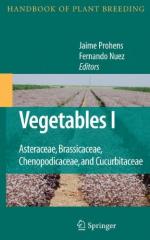|
This section contains 345 words (approx. 2 pages at 300 words per page) |
Asteraceae (or Compositae), the sunflower family, is the largest family of flowering plants, encompassing some fifteen hundred genera and nearly twenty-five thousand species. Most species are herbs, but some are shrubs and a few are trees. They are of worldwide distribution and are often conspicuous in their habitats. Members of the family share a distinctive flowering structure, consisting of numerous small flowers (often called florets) that are tightly clustered into a head. The five petals of a floret are fused to form a corolla tube that encloses the stamens and pistil. Florets that have all evenly sized petals are called disk florets. Florets that have fused petals expanded greatly on one side into a long strap are called ray florets. A typical head consists of numerous disk florets in the center and a row of ray florets around the margin. The strap-shaped corollas of the ray florets project outward, giving the entire head the appearance of a single, large flower (e.g., sunflowers, Helianthus annuus). Some members of the family have heads with only disk florets (e.g., ironweeds, Vernonia spp.), and some have all florets with strap shaped corollas (e.g., dandelions, Taraxacum officinale). A few members have the florets and heads greatly reduced and are wind pollinated (e.g., ragweeds, Ambrosia spp.).
 Open faces of sunflowers in Norfolk, England.
Open faces of sunflowers in Norfolk, England.
Despite the size of the family and its wide distribution, only a few members have become economically important crops, such as lettuce (Lactuca serriola), artichokes (Cynara scolymus), sunflowers (Helianthus annuus), chicory (Cichorium intybus), and pyrethrum (Tanecetum cinerariifolium, an insecticide). Some species are notable weeds (e.g., dandelions) and some, like sagebrush (several species of Artemisia), dominate the landscape where they occur. Many species are cultivated as garden ornamentals, and some use their generic names as common names, for example, aster, chrysanthemum, dahlia, gaillardia, and zinnia.
See Also
Angiosperms; Dicots; Flowers; Inflorescence.
Bibliography
Bremer, K. Asteraceae: Cladistics and Classification. Portland, OR: Timber Press, 1994.
Hind, D. J. N., and H. J. Beetje, eds. Compositae: Systematics. Proceedings from the International Compositae Conference. Kew, UK: Royal Botanic Gardens.
|
This section contains 345 words (approx. 2 pages at 300 words per page) |


